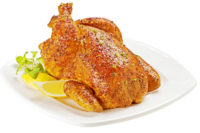Profitability, historically, has been a powerful incentive driving chicken production upward and onward. So, will the favorable financial situation experienced by the chicken industry in 2013 trigger in 2014 the typical production response and routine of a boom in production and bust in the bottom line?
Recent years’ experience may have been educational to the chicken industry in terms of learning to live with high and volatile feed costs, but recent years’ experiences have provided little guidance in terms of triangulating corn/soybean supplies/feed costs, domestic consumer/export demand, and the government mandate for renewable fuels. Although many agricultural analysts, especially at USDA, have penciled-in a bumper harvest for 2013 corn (if not soybeans too), those of us in the poultry business have learned not to actually count the chicks until they are truly hatched. It may well be into the new year before USDA accurately can or will provide a true best estimate for the 2013 crop harvests.
Having expressed that “complaint”, it is still recognized that feed costs during 2014 will be significantly improved when compared with 2013.
Given the ongoing level of profitability of chicken producers/processors, certain observers of the chicken industry have expressed mild surprise at the apparent self-imposed discipline with respect to increasing production at a somewhat measured pace.
A slightly closer analysis finds that the discipline is being imposed much more from “without” the industry than from “within”. That is, the unprecedented run-up in feed costs since 2007, coupled with unprecedented volatility, resulted in chicken companies adjusting the size of their hatchery supply flocks. These companies trimmed their flocks so there has been and continues to be little, if any, extra margin of hens being housed.
In more recent years the impact of the feed costs/volatility situation has also forced the primary breeders to adjust the size of their grandparent flocks. Having extra hens “laying around” for an unforeseen significant pick-up in demand for day-old breeder pullet chicks is a luxury primary breeders can no longer afford. Thus, the queue for obtaining day-old breeder pullets is probably the longest in the industry’s history.
The situation can be chalked up to another “unintended and unforeseen consequences” of the federal government forcing corn to be used for the manufacture of ethanol. If there had been normal market forces at work to allocate the short corn crop of 2012, the adjustment in the chicken breeding flocks would not have been as severe or as prolonged. But, as I noted in last year’s State of the Industry report, you cannot awaken someone who is pretending to be asleep.
Having noted that observation, it does appear the federal government now may be sleeping with one eye open, with respect to the renewable fuel standard for conventional biofuel (corn-based ethanol). That is, the Environmental Protection Agency (EPA) has signaled that ethanol, at least at the 10 percent blend rate, is, in fact, hitting the blend wall. A more prudent driver on the road would have seen the blend wall coming up ahead more quickly. Whether EPA can avoid the air bag hitting it in the face before it truly hits the blend wall in 2014 remains a good question in this analyst’s mind.
USDA sees the chicken hatchery supply flock being re-populated to a fairly adequate level by mid-2014. If this outlook proves correct, chicken production during the second half of 2014 could begin to approach its long-run annual rate increase of 4 percent.
USDA sees a 2 percent increase in chicken production in 2013 and a 2.5 percent increase in 2014. It is difficult to argue that the Department’s estimate for 2013 is not on the mark since much of the data is already in the books. However, the forecast of a 2.5 percent increase in 2014 is most likely a somewhat conservative prediction. USDA analysts point to very high soybean meal costs dampening profit margins for chicken producers which, in turn, will result in a less than enthusiastic response to step up production. Chicken companies will pay the higher soybean meal prices in 2014 because even with these higher costs the bottom line will be dark ink, not red ink. At the same time it is recognized the run-up in boneless/skinless prices peaked at $1.95 per pound (USDA Northeast, U.S. wholesale) in May 2013 and has been trending downward since then. Nonetheless, even the softer boneless/skinless breast prices will be adequate to cover the much improved feed costs.
An adequate export market in 2014 for chicken leg quarters will keep these prices in the mid-50 cents per pound range, which will be a few cents above the last half of 2012 and first three quarters of 2013.
Per capita consumption of chicken will be over 83.3 pounds, a pound and one-half higher than in 2013. However, it will take another year or two for consumption to return to the record level of almost 88 pounds in 2006, the year before the renewable fuel mandate kicked in. Consumption of chicken, like other meats, has been downhill since then.
Coincidence? Only the ethanol supporters believe so.








Report Abusive Comment